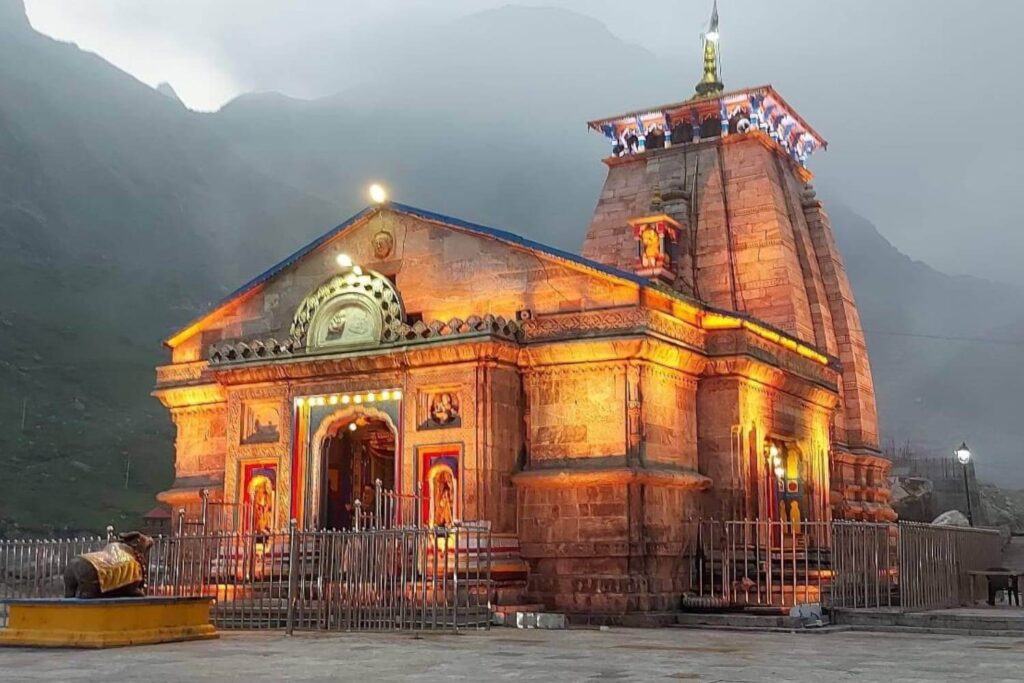
Kedarnath is one of the holy journey place in Northern India, situated on the bank of Mandakini stream at a height of 3584 meters above ocean level. The authentic name of this locale is “Kedar Khand”. Kedarnath sanctuary is a piece of Singe Dhams and Panch Kedar in Uttarakhand and one of the 12 Jyotirlingas of Ruler Shiva in India.
Overview
There are in excess of 200 hallowed places committed to Master Shiva in Chamoli locale of Uttarakhand itself, the main one is Kedarnath. As per legend, the Pandavas in the wake of having prevailed upon the Kauravas in the Kurukshetra war, felt regretful of having killed their own Friends and relatives and looked for gifts of Ruler Shiva for recovery. He evaded them more than once and keeping in mind that escaping took shelter at Kedarnath as a bafellow.
On being followed, the Ruler jumped into the ground, leaving his mound on a superficial level at Kedarnath. The excess parts of Ruler Shiva showed up at four different places and are revered there as his indications. The arms of the Master showed up at Tungnath, the face at Rudranath, the paunch at Madmaheshwar and his locks (hair) with head at Kalpeshwar. The Kedarnath and four previously mentioned places of worship are treated as Panch Kedar (Panch implies Five in Sanskrit).
The Sanctuary at Kedarnath presents a monumental sight, remaining in center of a wide level encompassed by grand snow covered tops. The sanctuary was initially implicit eighth century A.D. by Jagad Master Adi Shankaracharya and stands neighboring site of a much prior sanctuary worked by the Pandavas. The internal walls of the gathering corridor are enlivened with figures of different gods and scenes from folklore. Outside the sanctuary entryway a huge sculpture of the Nandi Bafellow remains as gatekeeper.
Committed to Ruler Shiva, the Kedarnath sanctuary has stunning engineering Worked of very enormous, weighty and equitably cut dim sections of stones, it summons wonder concerning how these weighty chunks were moved and dealt with in the prior hundreds of years. The sanctuary has a Garbha Griha for love and a Mandap, able for congregations of travelers and guests. A conelike stone development inside the sanctuary is loved as Master Shiva in his Sadashiva structure.
History
In Hindu tradition, it is believed that Lord Shiva manifested in form of Jyotirlingam or the cosmic light. There are 12 such Jyotirlingas and Kedarnath is highest among them. This magnificent temple is ancient and constructed over a thousand years ago by Jagad Guru Adi Shankaracharya. It is located in the Rudra Himalaya range of Uttarakhand State. It is situated at an altitude of 3,581 mt & it is a 16 km trek from the nearest place of Gaurikund.
The Kedarnath temple is built of massive stone slabs over a large rectangular platform. The temple is ascended through large grey Steps which leads to the Holy Sanctums. We can find inscriptions in Pali language on the steps. The inner walls of the temple sanctum are adorned with figures of various deities and scenes from mythology.
The origin of Kedarnath temple can be traced to the great epic – Mahabharata. According to legends, after winning the battle of Mahabharata against the Gauravas, the Pandavas sought blessings of Lord Shiva to atone their sins of Killing men during the war. Lord Shiva eluded them repeatedly and while fleeing from them took refuge at Kedarnath in form of a bafellow. On being followed by the Pandavas, he dived into ground at the exact place where the Holy Sanctum is now present, leaving behind his hump on the floor surface, which is now visible. This Hump inside the temple is in the form of a conical rock formation and is worshipped as Lord Shiva manifested in his Sadashiva form. The Pujas and Archanas are performed on this manifestation by priests and piligrims. There is also a Holy Statue of Lod Shiva inside the temple, which is the portable manifestation (Utsavar) of the Lord.
Outside the temple door, a large statue of Nandi bafellow stands as guard. The temple, has been continually renovated over the centuries.
Kedarnath experiences very heavy Snowfall in Winter (upto several metres) and the temple itself is blanketed with snow from November to April. So, at the onset of Winter every year, which is normally in the First week of November and on an auspicious date which is announced in advance by the holy symbolic statue of Lord Shiva is carried down from Kedarnath temple to a place called Ukhimath, where it is worshipped as Lord Shiva. The pujas and archanas are done at Ukhimath from November till May of next year. In the first week of May and on an auspicious date which is announced in advance by BKTC the symbolic statue of Lord Shiva is carried back from Ukhimath to Kedarnath and reinstated in the original place. It is at this time, that the doors of the temple are thrown open to pilgrims, who flock from all parts of India, for a holy pilgrimage. The shrine generally closes on the first day of Kartik (Oct-Nov) and reopens in Vaishakh (Apr-May) every year.
Weather
Winter (October to April)
Winters has chilly days. Minimum can touch sub zero levels and snowfall is very common. These months are not the perfect time for travelling.
Summer (May to June)
Summer (May to June) are very pleasant with moderately cold climate. Summers is ideal for all sight seeing and the holy Kedarnath pilgrimage.
Monsoon (July to mid-September)
Monsoon (July to mid-September) are accompanied with regular rains and also temperature drops down. The region is prone to occasional landslides and travelling can be difficult.
The holy city of Kedarnath is open for public views from May to October/November but the temple remains closed during the monsoon months as landslides are common.
The region experiences pleasant and cool summer while winters are very chilly and snowfall is a regular occurrence.
How to Reach
By Flight: Jolly Grant Airport (35 kms from Dehradun) is the nearest Airport to Kedarnath situated at a distance of 235kms. Jolly Grant Airport is well connected to Delhi with daily flights. Gaurikund is well connected by motorable roads with Jolly Grant Airport. Taxis are available from Jolly Grant Airport to Gaurikund.
By Train: The nearest railway station to Gaurikund is Rishikesh. Rishikesh railway station is situated 243kms before Gaurikund on NH58. Rishikesh is well connected by railway networks with major destinations of India. Trains to Rishikesh are frequent. Gaurikund is well connected by motorable roads with Rishikesh. Taxis and buses are available from Rishikesh, Srinagar, Rudraprayag, Tehri and many other destinations to Gaurikund.
By Road: Gaurikund is well connected by motorable roads with major destinations of Uttarakhand state. Buses to Haridwar, Rishikesh and Srinagar are available from ISBT Kashmiri Gate New Delhi. Buses and Taxis to Gaurikund are easily available from major destinations of Uttarakhand state like Dehradun, Haridwar, Rishikesh, Pauri, Rudraprayag, Tehri etc. Gaurikund is connected with Ghaziabad by National Highway 58.









Leave a Reply